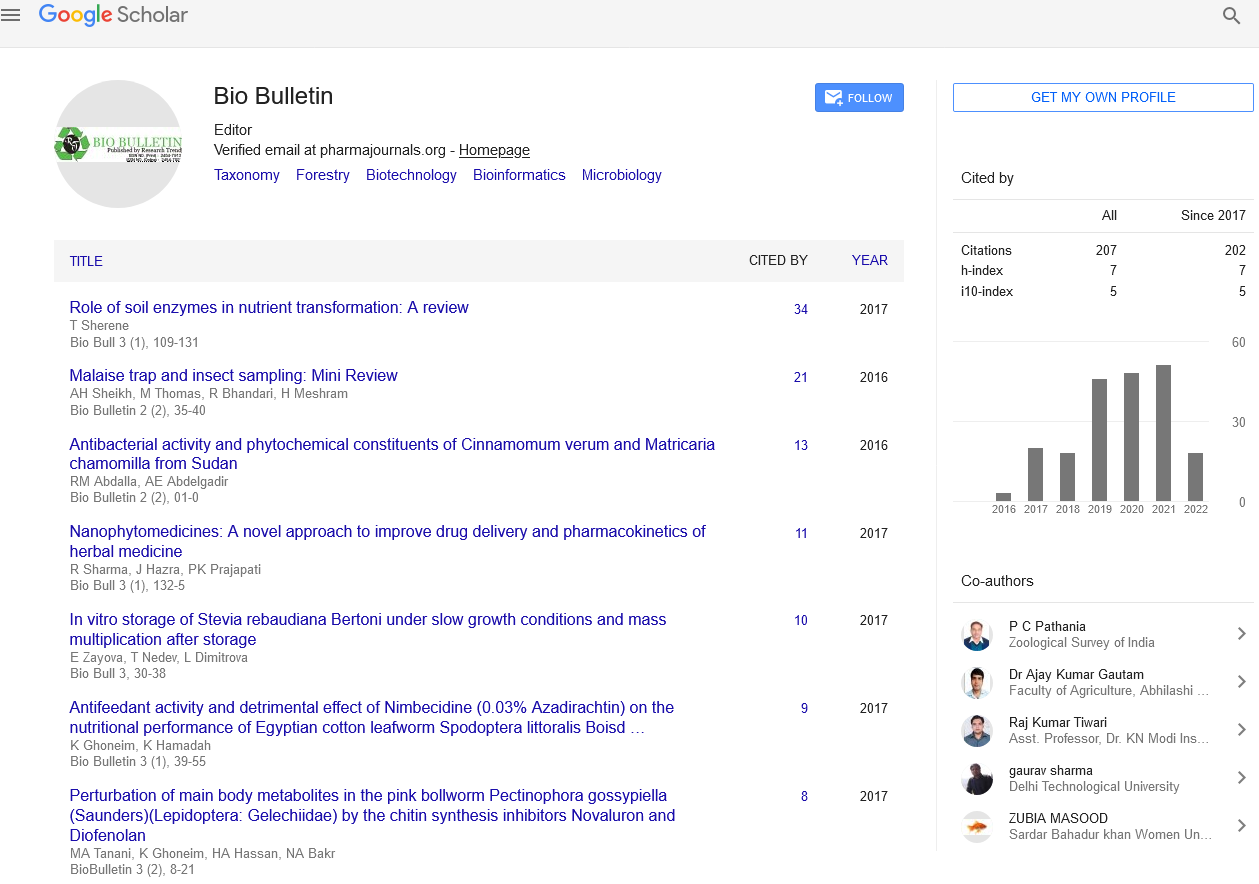Different Modes of Nutrition in Various Organisms
Perspective - (2022) Volume 8, Issue 1
Description
Carbohydrates are the most prevalent source of energy in food, which is an organic substance. Food also includes fats and proteins. Glucose, often known as simple sugar, is the most basic carbohydrate meal. Starch is a more complicated food that is also generated from glucose. Nutrition is the process of ingesting and utilizing food, the collected food is used to supply energy for the organism's different metabolic functions during this procedure.
Mode of nutrition
The term "mode of nutrition" refers to how an organism obtains or procures nourishment. Food is not obtained in the same way by all microbes. Diverse creatures have different ways of acquiring or procuring food. In other words, different creatures have different mechanisms of nourishment. All organisms can be categorized into two types depending on how they receive food: Autotrophic and Heterotrophic.
Autotrophic mode of nutrition
The term autotroph is made up of two words 'auto' which means self, and 'trophe' which means sustenance. As a result, autotrophic implies "self- feeding." In autotrophic nutrition, the organism uses sunlight energy to make food from inorganic Aprraw materials such as CO2 and H2O found in the environment.
Organic material is created from inorganic sources in autotrophic feeding. The autotrophic way of nourishment is used by green plants. The autotrophic technique of nourishment is used by autotrophic microorganisms as well. Autotrophic creatures, often known as autotrophs, are organisms that eat in an autotrophic manner.
All green plants are autotrophs, meaning they can feed themselves from inorganic chemicals in the environment such as carbon dioxide and water. Non-green plants, on the other hand, are not autotrophs. Autotrophic bacteria, sometimes known as 'autotrophic bacteria,' are autotrophs; the green pigment chlorophyll is found in autotrophic organisms and is capable of capturing sunlight. Autotrophs create food by mixing inorganic components in the environment, like as carbon dioxide and water, in a process known as photosynthesis. Autotrophs obtain their nourishment from photosynthesis.
Autotrophs are the food makers. Humans and a wide range of other creatures consume the food produced by autotrophs. Autotrophs are classified as follows based on their energy source.
Autotrophic photosynthetic organisms: Light energy is used by these bacteria to synthesize food. Photosynthesis is non-oxygenic in these bacteria, for photosynthesis, photosynthetic pigments are present in the cytoplasm; these can fall into one of three categories:
Chemosynthetic autotrophs: For food synthesis, they use chemical energy rather than light energy. The oxidation of chemical substances, whether organic or inorganic, produces chemical energy. Chemosynthetic bacteria are important in the recycling of nutrients such as nitrogen, phosphorus, iron, and sulphur. These can be divided into the following categories:
• Nitrifying bacteria: These bacteria produce energy by oxidizing nitrogenous substances. It acts as a nitrifier in the following two steps: Nitrosomonas and Nitrococcus convert NH3 to NO2 ; Nitrobacter and Nitrocystis convert NO2 -NO3 . Iron bacteria, such as Ferrobacillus, convert Fe2+ to Fe3+.
• Hydrogen bacteria, such as Hydrogenomonas, which converts hydrogen to hydrogen oxide.
• Methanomonas, a methane microbe that transforms CH4 to CO2.
• Sulfur bacteria: There are two types of sulphur bacteria. This includes everything from S through H2SO4.
Heterotrophic mode of nutrition
This mode of nutrition is known as heterotrophic nutrition. An organism's nourishment is derived from inorganic resources such as carbon dioxide and water, and it must rely on other species. A heterotrophic organism is one that feeds on the waste of other creatures. All of the species eat in a heterotrophic manner; this nutrition is used by the majority of bacteria and fungus. Heterotrophs include non-green plants such as yeast.
Heterotrophs are divided into distinct groups based on their feeding method. They are as follows:
Parasites (such as leeches and ticks): Parasitic nutrition is a type of nutrition in which organisms live on or inside their hosts' bodies and feed on them. A parasite is a type of organism that consumes food.
Saprophytes (mushrooms, for example): Organisms that feed on dead and decaying substances.
Holozoic (humans, dogs): Holozoic nutrition is characterized by the internalization (ingestion) and internal processing of gaseous, liquid, or solid and food particles.
Author Info
James Morocco*Citation: Morocco J (2022) Different Modes of Nutrition in Various Organisms. Bio Bulletin, 8(1): 01-02.
Received: 02-Mar-2022, Manuscript No. BIOBULLETIN-21-62417; , Pre QC No. BIOBULLETIN-21-62417(PQ); Editor assigned: 07-Mar-2022, Pre QC No. BIOBULLETIN-21-62417(PQ); Reviewed: 21-Mar-2022, QC No. BIOBULLETIN-21-62417; Revised: 28-Mar-2022, Manuscript No. BIOBULLETIN-21-62417(R); Published: 07-Apr-2022, DOI: 10.35248/2454-7921.22.8.089
Copyright: This is an open access article distributed under the terms of the Creative Commons Attribution License, which permits unrestricted use, distribution, and reproduction in any medium, provided the original work is properly cited.

